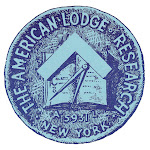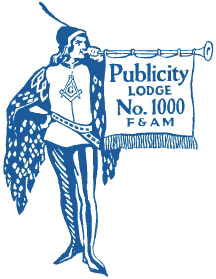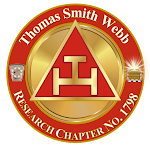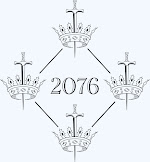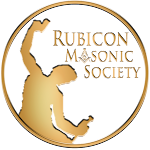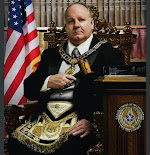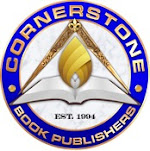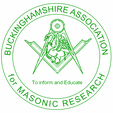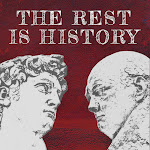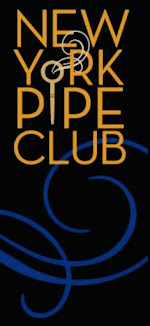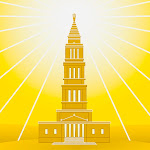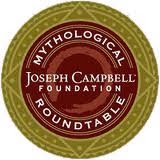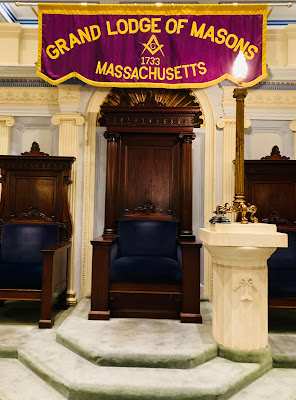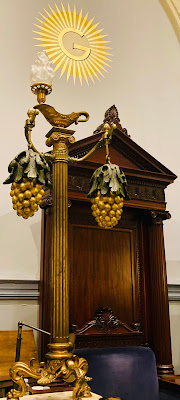 |
| Rendering of the proposed rebuilt Tun Tavern. |
Speaking of Pennsylvania (see post below), I miss City Tavern, Philadelphia’s Colonial-themed restaurant that stood twenty-six years on the site of the historic City Tavern, where our Founding Fathers dined—and drank—at the nation’s birth. Rabbit was my usual dish. The pandemic killed it three years ago, and the National Park Service, owner of the property, had some plan to lease the site to a new restauranteur, but it remains shuttered still. But that’s another story.
Magpie news today is the reported effort to reconstruct and in many ways recreate Tun Tavern! That too was a favorite spot of the Founders, who evidently decided it was the right place to establish both the U.S. Navy and Marine Corps. Oh, and our ancestor Freemasons met there as well.
A non-profit organization was formed in 2021 to raise funds and, presumably, to undertake the building of a new Tun Tavern. Parties involved are said to be Freemasons and others affiliated with other groups with roots in the original tavern and that are still extant. From the publicity:
Our Mission: To rebuild and re-establish The Tun™ as it was, a functioning mariner’s tavern reminiscent of colonial Philadelphia, serving period-influenced refreshments, food, and entertainment and offering an educational experience through exhibits, historical documents, and special events. All profits from operations of The Tun™ will be donated in perpetuity to support veteran causes, Masonic charities, educational scholarships, and qualified charities as determined by The Tun Tavern Legacy Foundation’s independent Board of Governors.
The Tun Tavern Legacy Foundation, Inc. is a registered 501(c)(3) non-profit organization formed by members of these organizations with origins at Tun Tavern that are still in existence:
United States Marines (1775)
Pennsylvania Freemasons (1731)
St. Andrew’s Society (1747)
Society of St. George (1729)
The Friendly Sons of St. Patrick (1771)
United States Navy (1775)
Members of these organizations are represented on our Board of Governors and are working together to re-establish The Tun™ in Philadelphia.
In America there are groups who have “created” destinations just because of their membership or interest in an organization or subject. These groups have a passion that draws them to their destinations, be it a love of nature, a love of country, a love of history… or love of tradition. There was such a place along Philadelphia’s early burgeoning waterfront in the 17th century, and it gave birth to no less than six prominent organizations– all of which are still in existence today with nearly 5,000,000 members who can claim the common heritage of their organizations’ founding at this place.
The fact that members of these organizations can name this place without hesitation is astounding, because no one has been there or seen it for more than 240 years, although most know its exact address: Water Street & Tun Alley. That place was The Tun tavern, often referred to in historical records as simply “The Tun.”
Opened in 1693 as what would today be called a micro-brewery, it was one of the first taverns erected in the new settlement of Philadelphia. Originally built by Master Brewer Joshua Carpenter, with the help of his brother Samuel Carpenter, The Tun had a reputation for the finest beer in Philadelphia. The demand for Joshua Carpenter’s beer was so strong that after operating The Tun for only about three months he decided to lease the tavern to someone else so that he could focus on his passion–crafting the finest beer and ale. It was apparently a good decision, as Joshua Carpenter was considered one of the wealthiest men in Philadelphia at the time of his death in 1722.
Between them, the Carpenter brothers owned four taverns and/or “coffee houses” (coffee and tea on the first floor, beer and spirits on the second). Joshua Carpenter’s businesses were so successful that he was one of the principal founders and financers of Christ Church in Philadelphia; a structure that still stands to this day.
The tavern changed hands multiple times over the next few decades, and it was under the management of a widow, Mary Campion in the 1730s, that it gained the reputation for good food. By the 1740s it was run by the Mullan Family, and furthered its reputation as the best place to get a meal in Philadelphia under the moniker “Peg Mullan’s Beefsteak Club.” Yet, as popular a destination as it was in the 1700s, the tavern had fallen into disrepair after standing nearly 100 years, and was razed in 1781, disappearing from the Delaware waterfront but never from the collective memories of the members of organizations that share a common heritage at The Tun.
It’s the destination that the members of these organizations still seek on an almost daily basis according to the Independence Hall National Park Rangers who encounter them. Yet, despite knowing the address, they just can’t find it.
Read more here. I really hope this is legit and successful and fast. I look forward to downing a few pints—and hopefully relishing more rabbit—there.
By the way, a tun is a large wooden cask for beer, wine, and other essentials.




















